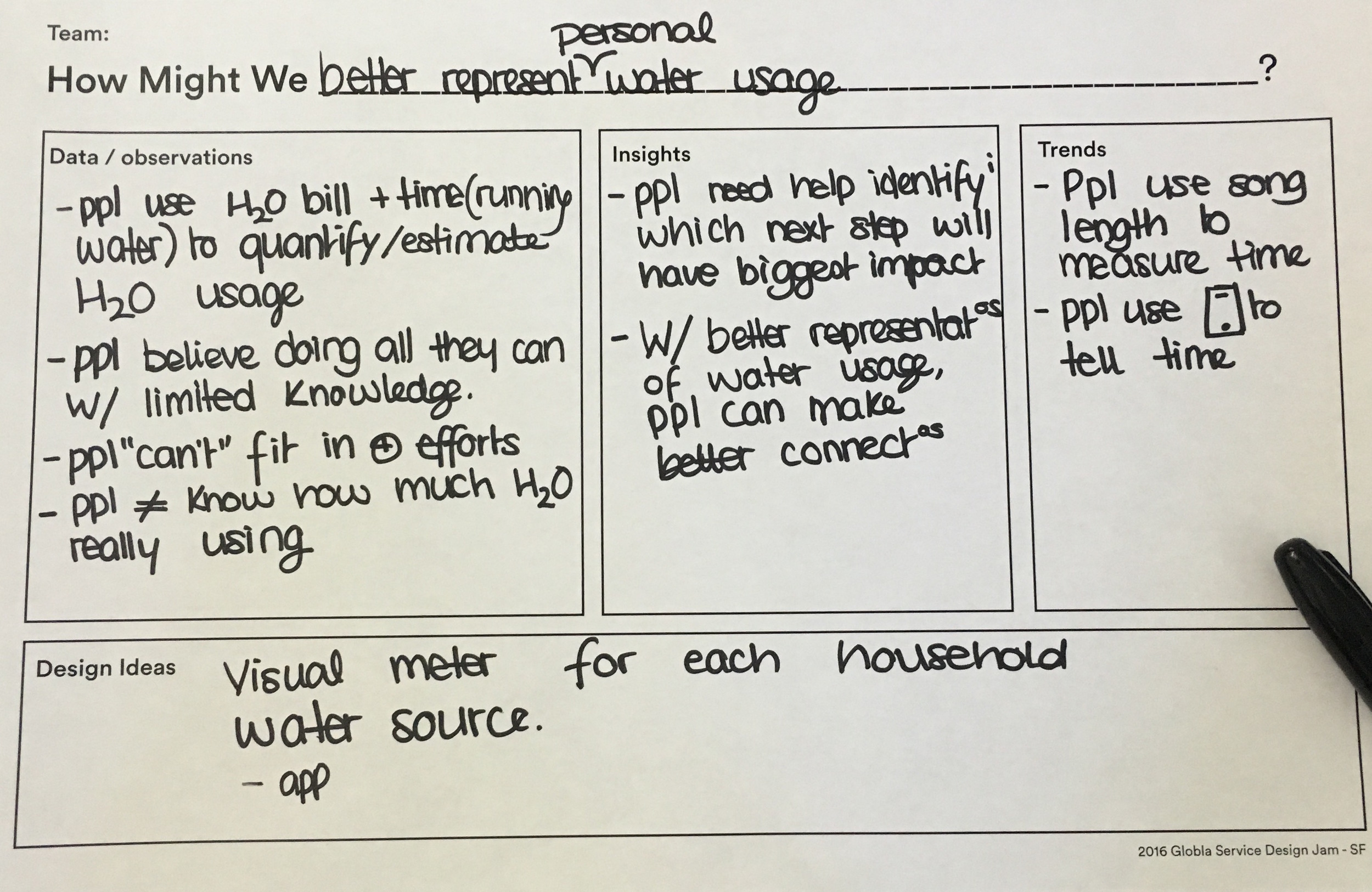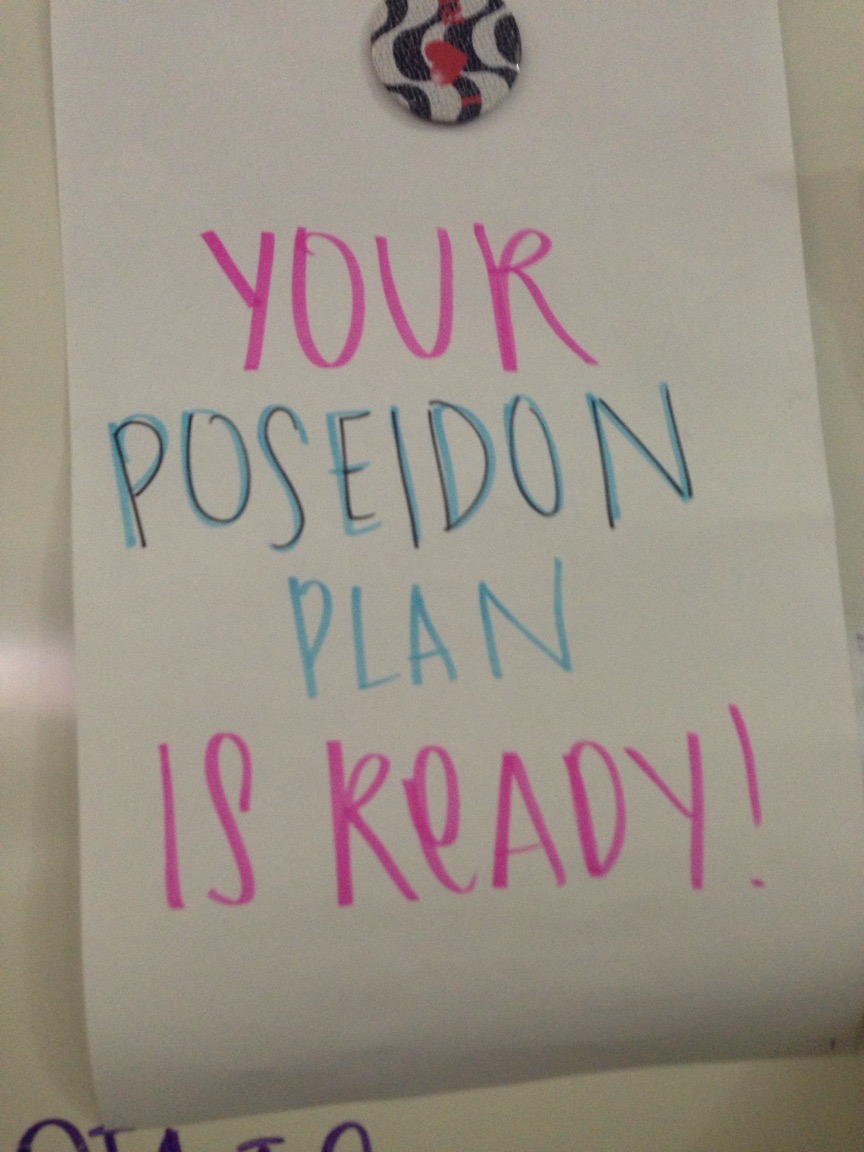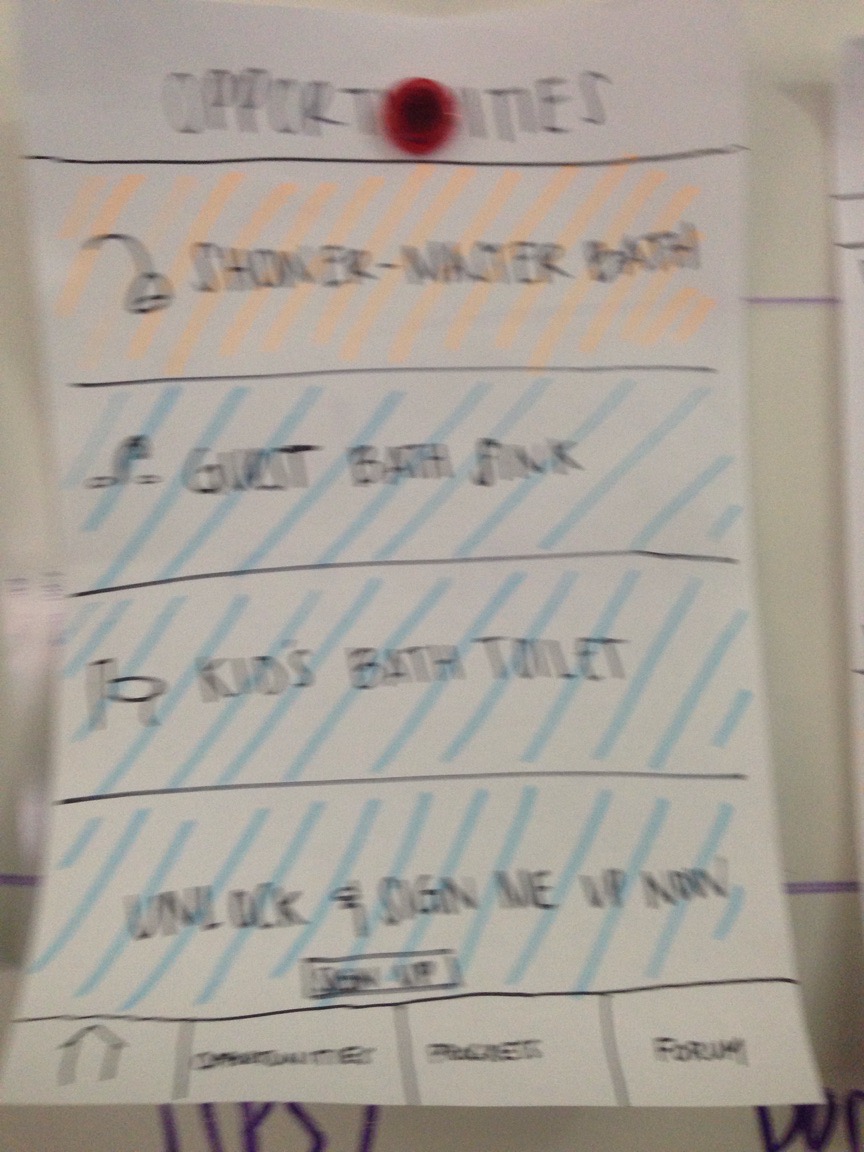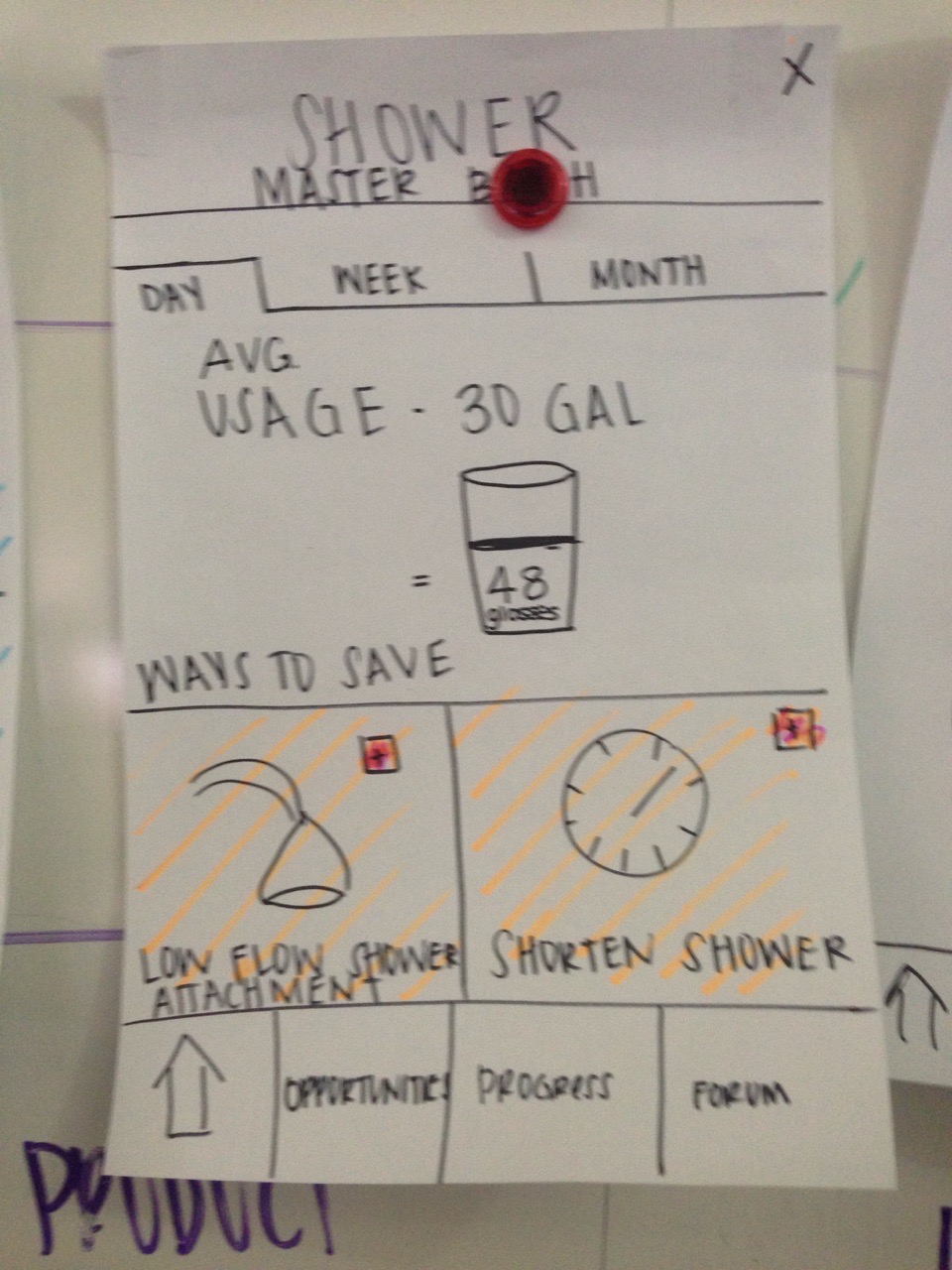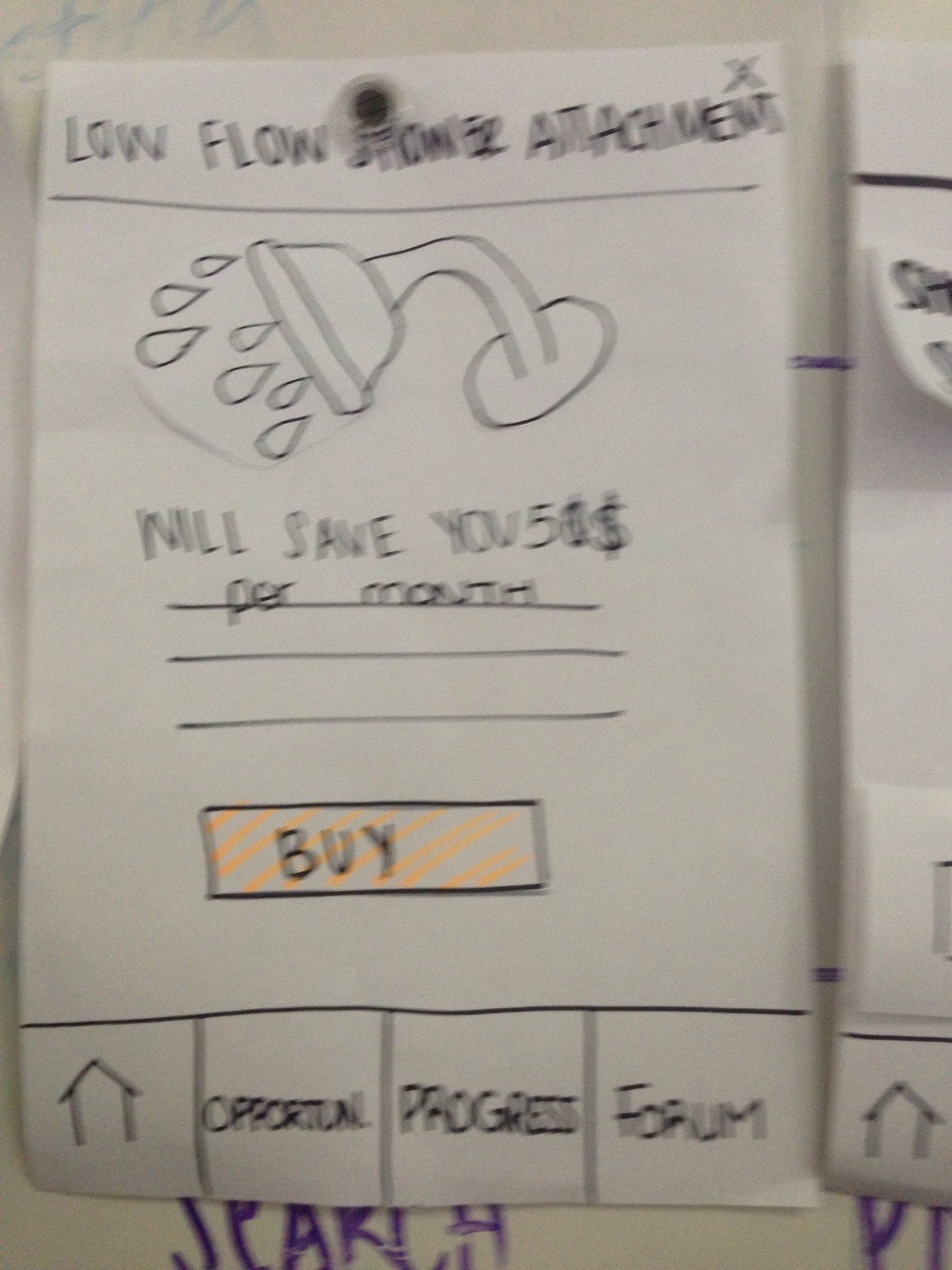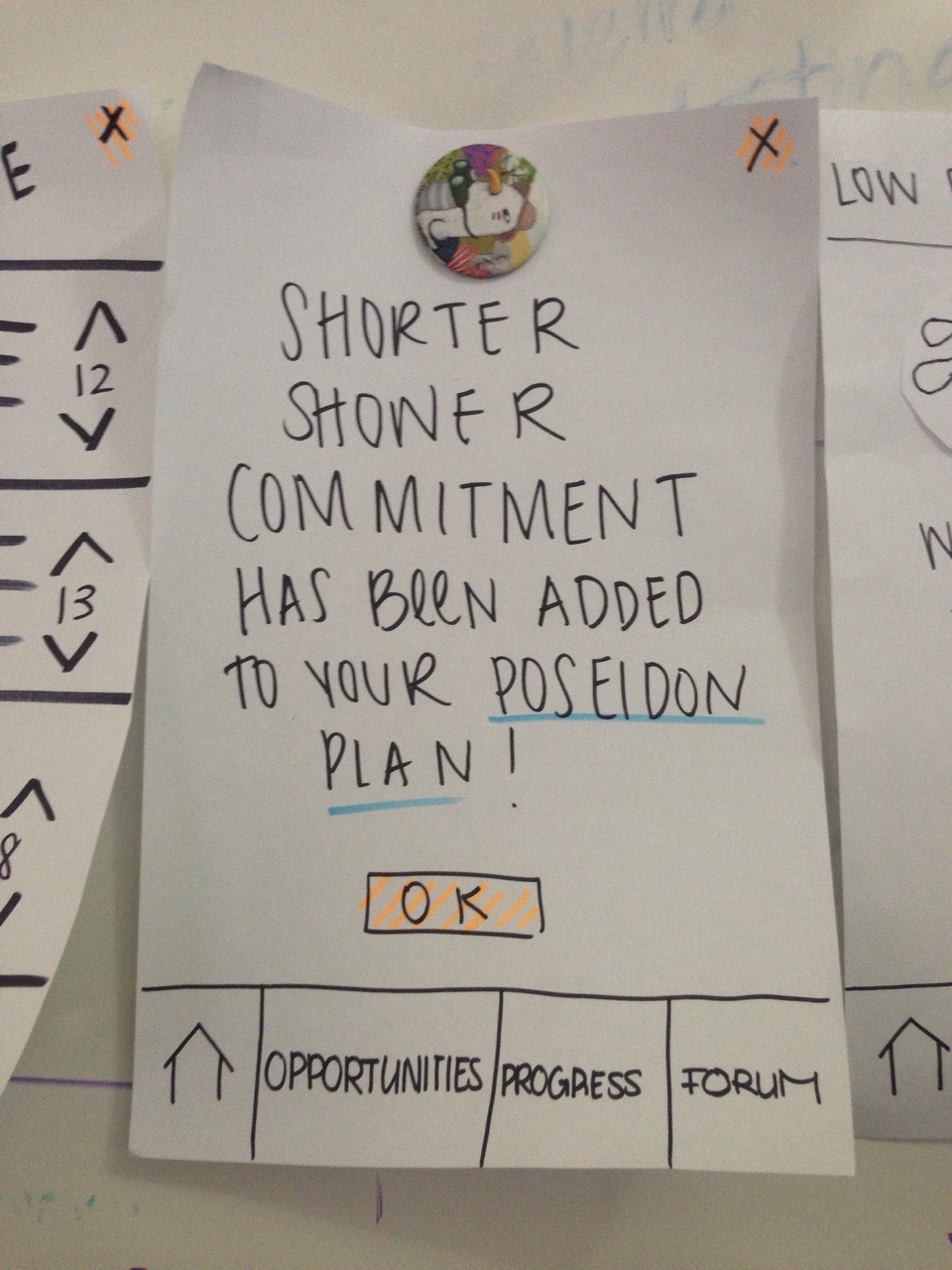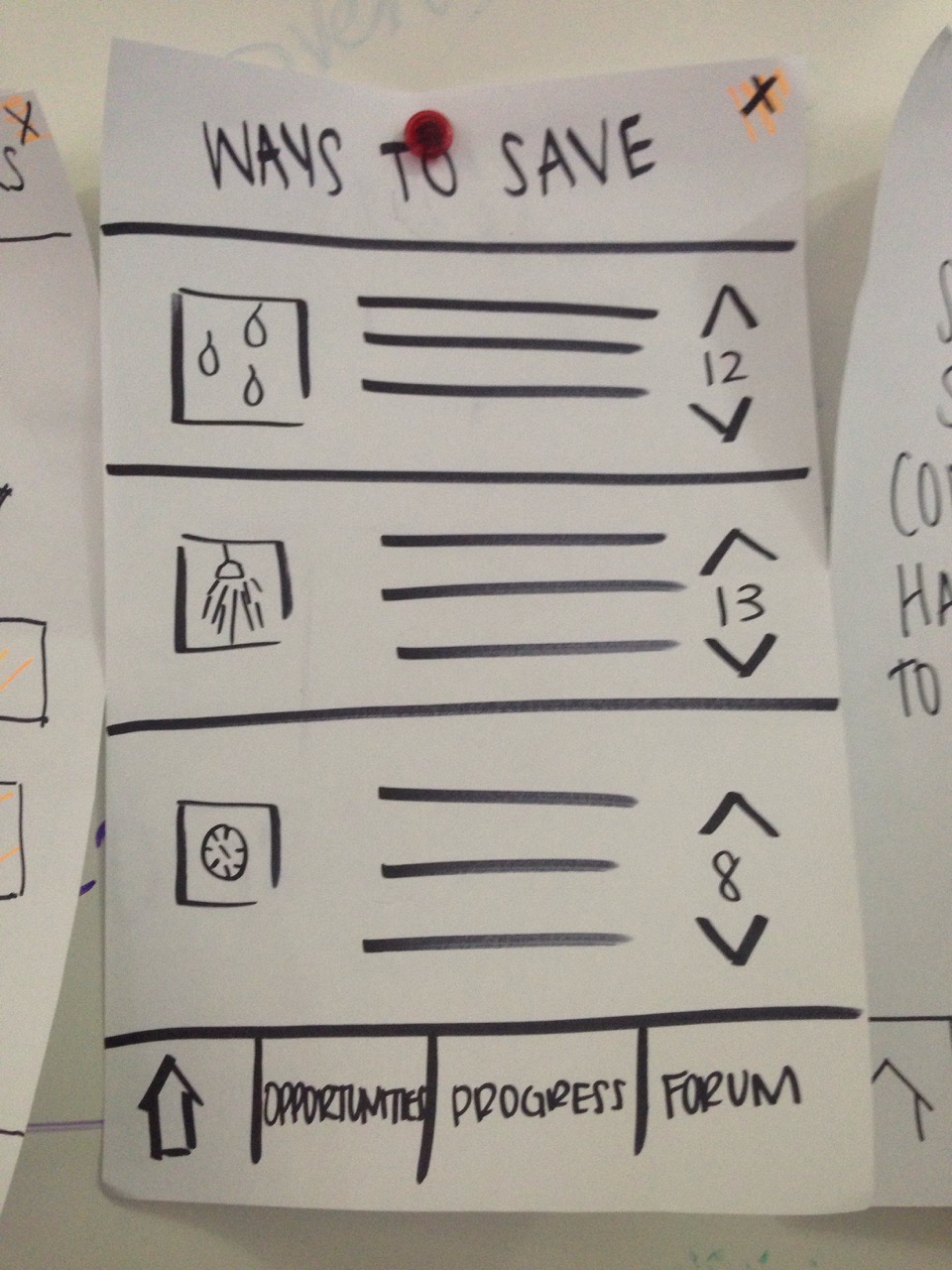San Francisco Global Service Design Jam
With a team of 4 other designers and engineers, I performed user research, storyboarded the process, and designed a low-fidelity prototype which my team and I bodystormed before a panel of designers. My team earned second place.
Brainstorm
My team chose the topic of water conservation, and brainstormed pain points that we could solve with a designed service.
User Interviews
We interviewed 10 individuals about their water use, asking them the following questions:
- What does water conservation mean to you?
- What currently motivates you to save water?
- Since the drought started, what changes have you made to save water?
- How have those changes impacted you?
- What prevents you from taking further steps to save water?
- Can you share a specific incident that raised your awareness of water conservation?
All of the participants were California residents, were aware of the current drought, and were already taking steps to save water – to the extent that it wasn't too much effort. They all claimed to take short showers (5-10min), and if they had gardens had reduced their watering frequency.
Our main takeaways:
- San Franciscans are very water conscious!
- People were conserving water when it was easy (shorter showers, only running full loads of laundry or dishes, reducing the frequency of watering their yards or letting them die, buying low-flow appliances when they had to replace their current toilets or washing machines, etc.)
- Some participants were aware of further steps they could take, but refrained because it was too much effort. For example, a busy mother we interviewed knew she could save the water in her shower in a bucket and use it on her garden later, but her life was so full and hectic already that she couldn't imagine taking the extra time to fill buckets and then lug them out to her garden to water. She was very interested in household water conservation though, and would consider it if she could install a pipe system once and have the water diverted to the garden automatically.
- Participants knew that they were saving water through their actions, but didn't know how much they were actually saving.
- Financial incentives were very powerful to help people reduce their water use. One family we interviewed was visiting San Francisco from Clovis, California, and owned a 3/4 acre garden full of orange trees, limes, and 51 rose bushes – a highly water-intensive space. When Clovis initiated a fine for residents who didn't' reduce their water usage by 36%, the family stopped watering their garden, and lost 80% of the garden.
Based on these findings, we determined that if our target market were San Francisco residents, we would have to develop a service that would show users exactly how much water they were saving, and make that service extremely easy to implement.
How Might We...
We then proceeded to iterate through several How Might We statements to zoom in on a topic. We chose to work on "How might we make water conservation easier?"
Persona-Building
We designed a persona named Annalise based on our interviews with San Francisco residents. She is relatively well-off, the head of her household (so completely in control of water usage in her house), and wants to save water without too much effort or time.
Storyboarding
We storyboarded all the user touchpoints with the service:
- External trigger
- Curiosity & research into a service
- Research solution
- Annalise finds services online
- She looks up reviews for the services she's found to pick one
- She chooses Poseidon, and signs up through the website
- Service Install
- A package arrives with the rings meters for Annalise's faucets, and she installs them herself
- Realization of water usage and waste
- Behavior chaange
- End point


